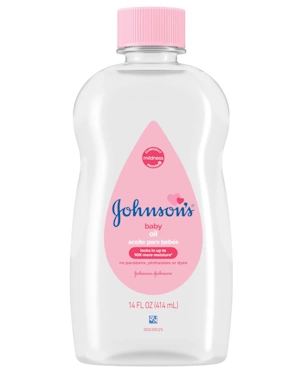
Johnson’s, Baby Oils Original, 14 Fl Oz
Check Price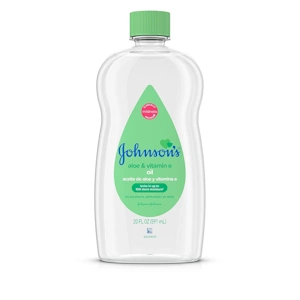
Johnson’s Baby Oil, Mineral Oil Enriched with Aloe Vera and Vitamin E
Check PriceYou’ve probably seen Johnson’s Baby Oil on every drugstore shelf. But is it safe for your baby’s soft skin? Short answer: yes. For most babies, it’s safe, when used the right way.
As a mom who’s spent hours testing baby products (and wiping up toddler spills), I’ve done the homework. I’ve read the research and heard from other parents.
Let’s break it down in simple terms, so you can decide what’s best for your little one.
Table of Contents
Johnson Baby Oil Reviews
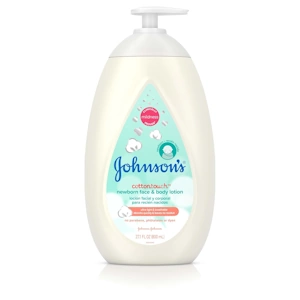
Johnson’s CottonTouch Newborn Baby Face and Body Lotion
Check Price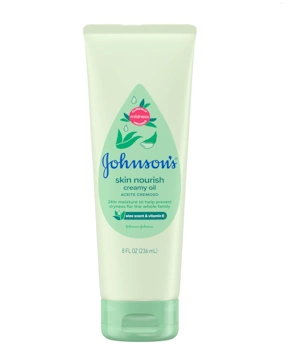
Johnson’s Skin Nourish Creamy Oil (Aloe & Vitamin E)
Check PriceJohnson’s Baby Oil is widely appreciated for its ability to deeply moisturize and soften the skin, though some users with sensitivities report irritation due to the added fragrance.
Positive Feedback
Highly Effective Moisturizer
Many reviewers, especially those dealing with very dry skin or eczema, say it delivers excellent hydration. When applied to damp skin, it leaves the skin feeling smooth, silky, and nourished for hours.
Useful Beyond Baby Care
Adults frequently highlight how versatile the oil is. It’s praised as a gentle makeup remover, a soothing shaving aid that reduces razor burn, and a reliable option for softening cuticles. Many describe these uses as surprisingly helpful.
Pleasant Scent
The classic baby oil fragrance is often mentioned as clean, mild, and comforting. Scented variants, such as those containing Aloe & Vitamin E, also receive compliments for their appealing aroma.
Good Value for Money
Because a small amount goes a long way, customers often consider it economical, especially larger bottles that last for months.
Negative Feedback and Cautions
Potential Skin Irritation
Some users, both adults and babies, experience redness, itching, or small rashes. These reactions are typically linked to sensitivity to fragrance or mineral oil.
Fragrance Sensitivity
A portion of reviewers wish for a fragrance-free version, noting that the added scent can be problematic for delicate or reactive skin.
Not Ideal for Acne-Prone Skin
Although mineral oil is generally non-comedogenic, some people with oily or acne-prone skin report breakouts and prefer to avoid using it on the face.
Can Feel Heavy or Slippery
The thick, oily texture isn’t for everyone. Some users find it greasy if overapplied, and many warn that it can make bathroom surfaces very slippery.
Best Johnson’s Baby Oil
When it comes to caring for delicate infant skin, the best choices from Johnson’s are usually the Original Baby Oil and the Baby Oil with Vitamin E. Both formulas are clinically tested, hypoallergenic, and designed to lock in moisture without irritating sensitive skin. Many parents also love Johnson’s Cottontouch Baby Massage Oil, which is specially created for newborns and extremely gentle.
Top Johnson’s Baby Oil Options for Infants

Key Benefits: Hypoallergenic, dermatologist-tested, and free from parabens, phthalates, and dyes. Creates a silky moisture-locking barrier.
What Parents Say: A classic favorite for its soft scent and reliable hydration. Great for daily use and baby massages.

Johnson’s Baby Oil with Vitamin E
Key Benefits: Lightweight, non-sticky, and easily absorbed. Helps protect newborn skin from dryness from day one.
What Parents Say: Ideal for regular massages thanks to its light texture that doesn’t leave a greasy feel.

Johnson’s Cottontouch Baby Massage Oil
Key Benefits: Formulated for newborns with gentle ingredients such as cottonseed oil. Designed for ultra-sensitive skin.
What Parents Say: Widely praised for being extra mild and improving skin softness and overall condition.

Johnson’s Skin Nourish Creamy Oil (Aloe & Vitamin E)
Key Benefits: Rich, creamy, and non-greasy with 24-hour hydration. Pediatrician and dermatologist-tested.
What Parents Say: Preferred by parents who want deep moisture without the slick feel of traditional oil.
Important Considerations
Fragrance:
All Johnson’s oils include fragrance. While most babies tolerate them well, those with very sensitive or eczema-prone skin may require extra caution.
How to Apply:
For best hydration, massage the oil onto damp skin right after a bath. Applying to wet skin helps trap much more moisture.
Safety Tips:
Always follow product instructions and keep baby oil out of reach to prevent accidental ingestion or inhalation.
What Is Johnson’s Baby Oil, Exactly?
If you’re like me, you saw that pink bottle on your mom’s shelf long before you had a baby of your own. Johnson’s Baby Oil has been around for decades. It came out in the 1930s as part of Johnson & Johnson’s baby care line. Since then, it’s become a classic in many homes.
At its core, it’s a simple oil made to lock in moisture. Parents often use it after bath time to keep baby’s skin soft. It’s also great for baby massage. That gentle rub can calm a fussy baby before naps or bedtime.
And here’s a secret, lots of adults use it too. I use it for dry skin, shaving, and even to take off makeup.
Today, there are a few versions:
- The classic (clear and lightly scented)
- Aloe Vera & Vitamin E (soothing and smooth)
- Shea & Cocoa Butter (extra rich and creamy)
- Fragrance-free (perfect for sensitive skin)
You’ll find them at most drugstores or online. I’ve tried a few myself. For my baby, I stick with the fragrance-free one. But the aloe version feels amazing on my dry winter hands.
What’s in Johnson’s Baby Oil?
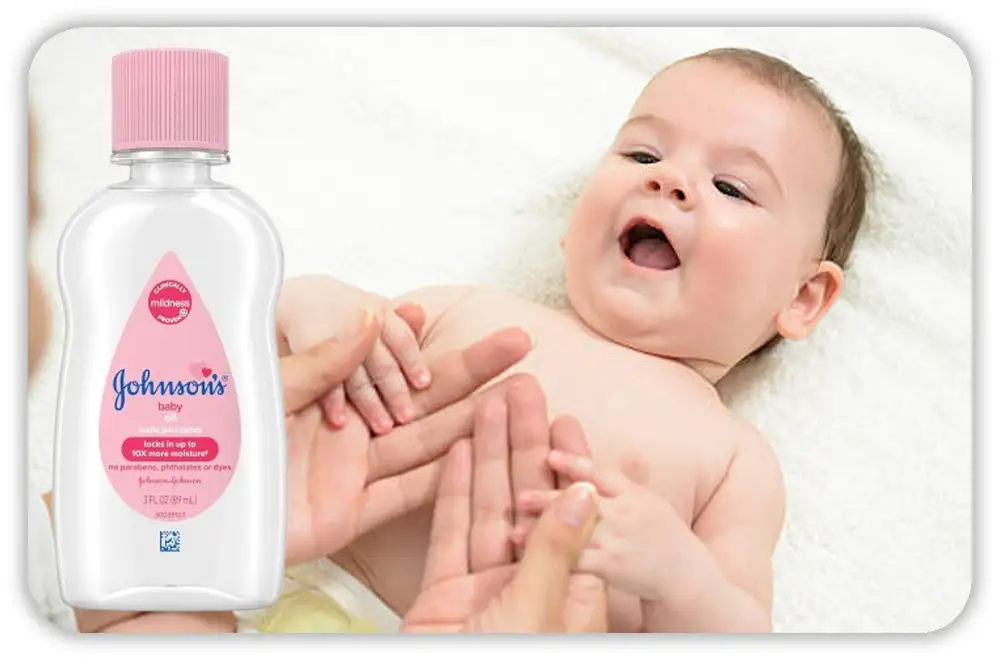
So, what’s actually inside that shiny bottle?
The main ingredient is mineral oil (also called Paraffinum Liquidum). It’s clear and has no smell. This oil makes a soft barrier on the skin. That barrier helps lock in moisture, especially after a warm bath, when baby’s skin can dry out fast.
Next up is fragrance, unless you pick the fragrance-free version. (More on that below.)
Some types also add:
- Aloe Vera: soothes and cools the skin
- Vitamin E: softens and protects with antioxidants
- Botanical oils: like shea or cocoa butter for deep moisture
Why are these used?
- Mineral oil works like a shield. It doesn’t go deep but keeps moisture in.
- Fragrance makes it smell sweet, but can irritate some babies.
- Aloe and Vitamin E help smooth and calm the skin.
I remember reading the label before using it on my first baby. I didn’t want anything too strong on his new skin. The list was short, and that gave me peace of mind. I started with a small amount and watched how his skin reacted.
Johnson’s Baby Oil Benefits

Johnson’s CottonTouch Newborn Baby Face and Body Lotion
Check Price
Johnson’s Skin Nourish Creamy Oil (Aloe & Vitamin E)
Check PriceJohnson’s Baby Oil is designed to lock in moisture by forming a protective barrier on the skin, helping keep it soft, smooth, and hydrated. Its hypoallergenic, dermatologist-tested formula makes it gentle enough for sensitive skin, whether used on babies or adults.
Benefits for Babies
Deep Moisturization
Helps prevent dryness and keeps a baby’s delicate skin comfortably hydrated throughout the day.
Perfect for Baby Massage
Its silky texture makes it ideal for gentle massages, helping soothe the baby while creating a calming bonding experience.
Cradle Cap Support
Massaging a small amount onto the scalp can soften and loosen cradle cap flakes, making them easier to remove during bath time.
Skin Protection
Creates a light barrier that shields delicate skin from irritation and external dryness.
Gentle, Mild Formula
Free from parabens, phthalates, and dyes, and formulated to minimize the risk of irritation, safe for daily use on sensitive skin.
Benefits for Adults
Intensive Moisture Lock-In
When applied to damp skin, it seals in significantly more moisture than regular lotion, making it great for dry areas like elbows, knees, and heels.
Makeup Removal
Effectively breaks down makeup, including waterproof products, without harsh rubbing.
Shaving Helper
Using a thin layer before shaving helps the razor glide smoothly, reducing the risk of razor burn and leaving the skin softer.
Cuticle & Foot Care
Keeps cuticles soft and nourished, and works well as an overnight foot treatment for dry or cracked heels.
Hair and Scalp Use
A tiny amount can add shine, control frizz, and soothe a dry scalp.
Note
Because baby oil forms a strong moisture barrier, those with oily or acne-prone skin should use it cautiously on the face. For best results, apply to damp skin so it absorbs evenly and locks in hydration effectively.
Is Johnson’s Baby Oil Safe for Babies?

Johnson’s, Baby Oils Original, 14 Fl Oz
Check Price
Johnson’s Baby Oil, Mineral Oil Enriched with Aloe Vera and Vitamin E
Check PriceShort answer? Yes. When used the right way, Johnson’s Baby Oil is safe for most babies. Parents have trusted it for generations.
The main ingredient is mineral oil, and most pediatric skin doctors say it’s safe. It’s called an occlusive, which means it forms a light barrier on the skin. That barrier helps trap moisture in. It doesn’t soak in deep. It just locks in water after bath time to keep baby’s skin soft.
Fun fact: Babies lose moisture faster than adults, especially after warm baths. So sealing it in really helps, especially in dry air or cold weather.
Let’s talk about fragrance. As a new mom, this part made me cautious. Some baby oils have scent. They smell nice, but not all baby skin loves it. If your baby has sensitive skin, eczema, or allergies, start with the fragrance-free one. That’s what I used with my little guy during his first months.
Here’s what worked for me (and what I found from research too):
- Start small. Try a tiny drop on baby’s arm or leg. Wait 24 hours. No redness? You’re good.
- Use after baths. Dab it on damp skin. A little goes a long way.
- Avoid rashes or broken skin. If skin is sore, wait and check with your doctor.
According to baby experts and the American Academy of Pediatrics, pharmaceutical-grade mineral oil is safe when used on skin. Just don’t put it near your baby’s eyes, nose, or mouth. And never use it inside the diaper area, it can trap moisture and cause rashes.
I loved using a drop or two for a gentle foot massage after bath time. My baby would smile and wiggle. It became a quiet bedtime habit for us, and one of my favorite memories.
Is Johnson’s Baby Oil Safe for Adults?
Yes, it’s safe for adults, too.
And honestly? I’ve used it more for myself than for my baby.
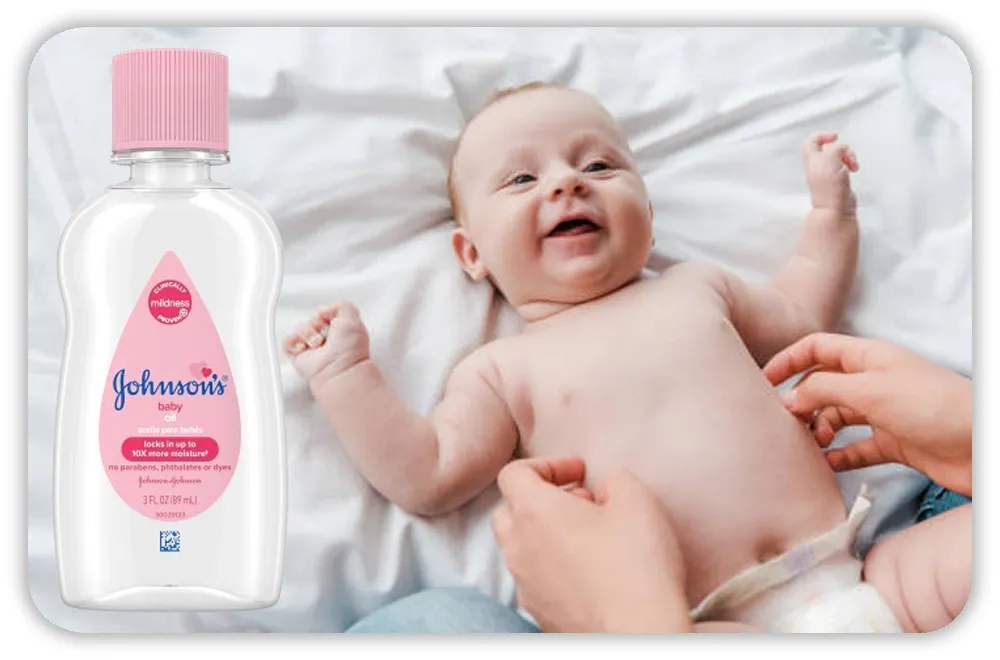
I first grabbed it in winter, when my legs felt dry and rough. A few drops after a shower kept my skin soft all day. It also works great for massage. And once? I used it to take off waterproof mascara. A cotton pad with baby oil worked like magic.
Baby oil isn’t just for babies. It seals in moisture for grown-up skin, too.
But here’s something to know: mineral oil sits on top of your skin. It locks in water, but it can also trap dirt or sweat. That matters if your pores are already clogged.
So, will it clog pores? (That’s what “comedogenic” means.)
- If your skin is dry or normal, you’ll likely love it.
- If your skin is oily or acne-prone, skip it on your face. It may cause breakouts for some people.
Derm tip: Use baby oil after washing and drying your skin. Dab it on while your skin is still a little damp. It works best on elbows, legs, or heels.
Here’s how I use it as an adult:
- After showers – Pat dry, then rub in a few drops.
- For shaving – Smooth legs, no razor burn.
- To soften rough spots – Great for cuticles and winter skin.
If it’s your first time, go slow. Try it on a small spot and watch how your skin reacts. And like with babies, the fragrance-free version is a good pick for sensitive skin.
Personally, I always keep a bottle on hand. It’s simple, cheap, and leaves my skin glowing, without any fancy creams.
The Mineral Oil Controversy: Is It Dangerous?
Let’s talk about the elephant in the room: mineral oil. If you’ve ever Googled it, you’ve likely seen scary headlines, “It’s made from petroleum!” or “It causes cancer!”
I saw those, too. And to be honest, I hesitated before using baby oil on my newborn.
But here’s what I found (and what gave me peace of mind):
Mineral oil in baby products isn’t the same as motor oil.
There are two main kinds:
- Industrial-grade used in machines. Not safe for skin.
- Pharmaceutical-grade highly refined and safe. Used in baby oil and skin care.
Johnson’s Baby Oil uses pharmaceutical-grade mineral oil. It goes through strict steps to remove any impurities. The result? A clear, odor-free oil that’s safe for sensitive skin.
What do experts say?
Big health groups say it’s safe:
- The FDA allows it in baby and skin products.
- The EU’s SCCS approves it for use in cosmetics.
- The WHO and IARC say pure mineral oil is not linked to cancer.
I even asked my pediatrician. She told me mineral oil has been used safely for years, especially for dry baby skin.
Here’s the truth:
Yes, it’s made from petroleum. But so is Vaseline, which hospitals use to protect wounds. What matters most is how it’s cleaned and processed.
Don’t let myths scare you. The mineral oil in Johnson’s Baby Oil is pure, gentle, and trusted by doctors.
I get it, it’s normal to worry about anything that touches your baby’s skin. I felt the same way. But once I dug into the facts, I felt good about using it. Now? It’s a quiet part of our bedtime routine.
Is the Fragrance in Johnson’s Baby Oil Safe?
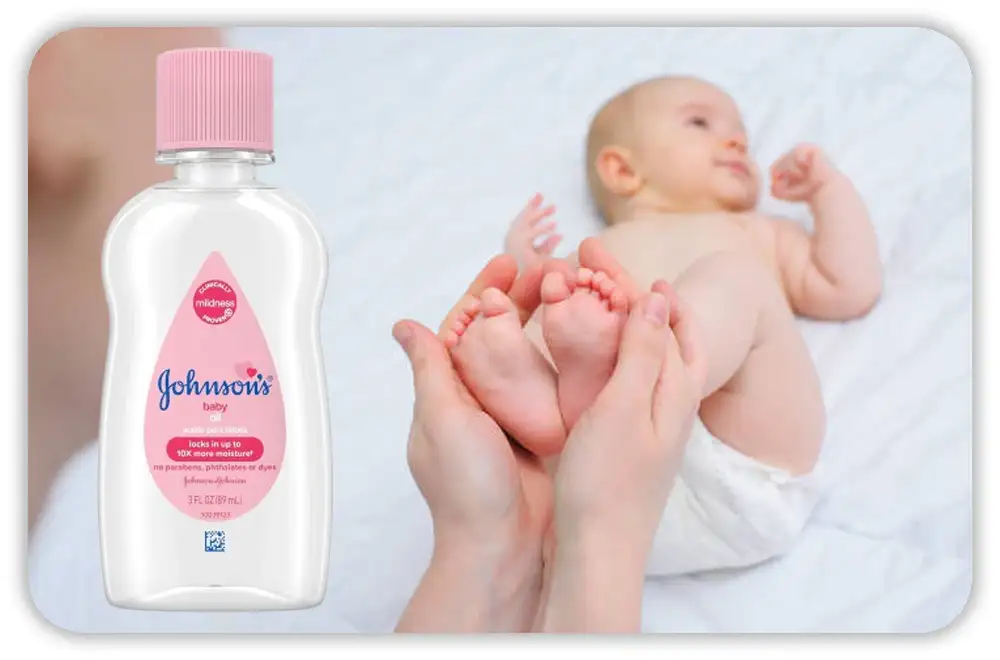
You know the one, it’s soft, clean, and kind of nostalgic. The classic Johnson’s Baby Oil has a light fragrance that many of us grew up with. But as a new mom, I wondered: Is that scent really safe for baby skin?
Here’s what I found.
“Fragrance” on a label means a mix of ingredients made to smell nice. But companies don’t always list what’s in it. It’s often a trade secret. That can feel frustrating when you’re trying to make careful choices.
So, what is “fragrance,” really? It might include essential oils, lab-made scents, or both. While it’s safe for most people, it can irritate sensitive skin or cause allergies.
When my baby was a newborn, I didn’t want to take risks. His cheeks were red and dry already. So I chose the fragrance-free version of Johnson’s Baby Oil. It worked just as well, and I felt better using it.
If you’re not sure whether to use fragrance, here’s what helped me:
- Check baby’s skin. If it’s rashy or eczema-prone, go fragrance-free.
- Try a patch test. Dab a little on baby’s arm or leg. Wait 24 hours.
- Read the label. “Fragrance-free” means no scent at all. “Unscented” might still have scent blockers.
Some babies are fine with light scents. Others are more sensitive. When in doubt? Less is more, especially in the early weeks.
Is Johnson’s Baby Oil Safe to Use Daily?
Yes, it’s safe to use daily, as long as you use it the right way.
For babies, I found that a little goes a long way. I used baby oil after bath time, when my son’s skin was still a bit damp. Just a few drops on his arms and legs helped seal in moisture. His skin felt soft, and the routine became a sweet moment we shared.
That said, I didn’t use it every single day. Some days, his skin was already smooth, so I skipped it. On drier days, especially in winter, I’d reach for the bottle again.
Here’s what worked for us:
- Use after bath time, only on damp skin
- Skip the diaper area, trapped moisture can cause rashes
- Choose fragrance-free if baby has sensitive skin
For adults, I use Johnson’s Baby Oil more often. After a warm shower, it’s great on legs, elbows, and dry heels. I massage in a few drops while my skin is still damp. It leaves a soft, silky feel, no lotion needed.
But I’ve learned when not to use it:
- On my face (I break out easily)
- On cuts or rashes
- Before sun exposure, it can make skin more sensitive and weaken sunscreen
Daily use is about balance. If your skin, or your baby’s, feels happy, go ahead. If you see redness or bumps, cut back. Your skin will let you know what it needs.
Natural Alternatives: Is There Something Safer?

Johnson’s CottonTouch Newborn Baby Face and Body Lotion
Check Price
Johnson’s Skin Nourish Creamy Oil (Aloe & Vitamin E)
Check PriceIf you’re like me, you’ve wondered, should I use something more “natural” than baby oil? I had that same thought, especially as a new mom. I wanted the safest, purest thing on my baby’s skin.
So, I did what any sleep-deprived parent would do, I went down the rabbit hole. Coconut oil, shea butter, almond oil… I tried them all.
Here’s what I found (and what worked for us):
Common Natural Alternatives
- Coconut oil: smells great, melts in your hand
- Shea butter: rich and creamy, but thick
- Jojoba oil: light and close to skin’s natural oils
- Sweet almond oil: soft, gentle, and soaks in fast
Lots of parents around the world use these. I tried coconut oil for baby massage. It smelled like summer, and my baby loved the warmth. But over time, I noticed a few things.
Pros and Cons vs. Mineral Oil
Pros:
- Natural oils often have vitamins and fatty acids
- They feel rich and soothing on dry skin
- Easy to find at health stores or online
Cons:
- Some spoil fast, like coconut oil, which can go bad
- Nut oils (like almond) may cause allergies
- Thick oils like shea can clog baby’s tiny pores
One time, I tried a “pure” essential oil blend from a trusted site. My baby’s skin turned red within minutes. That was a wake-up call, natural doesn’t always mean gentle.
Why “Natural” Isn’t Always Safer
I get the appeal of plant-based stuff. I really do. But safety depends on how it works, not where it comes from.
Mineral oil may sound boring, but it’s stable, clean, and safe. It doesn’t spoil. It forms a soft layer on the skin without soaking deep. That’s why many doctors still recommend it, especially for newborns.
Plant oils can vary a lot. They might smell stronger, carry allergens, or have pesticide traces if not organic.
So, for me? The safest choice wasn’t always the most “natural” one. It was the one that worked, and didn’t upset my baby’s skin.
What Do Doctors and Experts Say?
After reading labels, testing on my baby’s skin, and trying a few oils myself, I still wanted to know:
What do real experts say about Johnson’s Baby Oil?
So, I looked into it, and talked to a few trusted voices.
Dermatologists and Pediatricians Say: It’s Safe
Most skin doctors agree: pharmaceutical-grade mineral oil is safe for babies and adults. It’s often found in creams made for dry skin or eczema. That’s because it forms a light layer on the skin and helps lock in moisture, without soaking deep.
The American Academy of Dermatology (AAD) says mineral oil is one of the gentlest moisture sealers out there. It helps trap water and keeps skin soft, especially right after a bath.
Pediatricians often recommend it for newborns, especially the fragrance-free version. My own doctor said it was fine to use after bath time. Her only advice? Don’t use it on broken skin or diaper rashes.
What the Science Says
I checked a few research summaries. Here’s what stood out:
- The FDA allows mineral oil in baby and skin products, if it meets safety rules.
- The World Health Organization (WHO) and IARC say refined mineral oil doesn’t cause cancer when used on skin.
- The EU’s SCCS also found no issues with cosmetic use, if the oil is highly purified (which Johnson’s Baby Oil is).
What About Consumer Groups?
Some sites, like the Environmental Working Group (EWG), rate ingredient safety.
They sometimes flag “fragrance” as a concern (since the mix isn’t always listed), but mineral oil gets a low hazard score, especially in fragrance-free versions.
That made me feel better. I still did a patch test, just to be safe, but the science backed up what I saw: no redness, no rash, just soft baby skin.
Still unsure? Ask your pediatrician. They’ll know what’s best for your baby’s skin. For me, getting expert advice helped turn my worry into confidence, and that made a big difference in our daily routine.
What Real Parents Say
Okay, so you’ve heard from doctors. You’ve seen the ingredient lists. But what about the real experts? I mean parents. Tired, loving, label-reading parents like us.
When I first grabbed Johnson’s Baby Oil, I didn’t stop at the label. I read Amazon reviews at 2 a.m. I searched Reddit. I even asked moms at playdates.
Here’s what I saw again and again:
Most parents say it works
Many parents use it every night. Some say it helps seal in moisture after baths. Others use it for baby massage. One mom on Reddit wrote, “It’s the only thing that kept my baby’s legs from flaking in winter.” I had the same thing happen during dry winter nights.
Fragrance-free is a favorite
Parents with babies who have eczema or allergies often avoid scents. One Amazon review said, “We tried the classic kind and saw a rash. Switched to fragrance-free and haven’t looked back.” That happened to us too. My baby’s cheeks looked calm and smooth again.
Real tips from real parents
These tricks helped me a lot, and now I share them too:
- Use it right after a bath. Damp skin is best.
- Try a patch test first. This is key for babies under 6 months.
- Don’t use it in the diaper area. That can cause rashes.
- A little goes a long way. Just a few drops!
One dad uses it on his beard. A mom said it softened her heels during pregnancy. I use it to rub my toddler’s feet when they hurt. Now he asks for “feet oil” before bed.
It’s a small habit. But it makes a big memory.
Final Verdict: Is Johnson’s Baby Oil Safe to Use?

Johnson’s CottonTouch Newborn Baby Face and Body Lotion
Check Price
Johnson’s Skin Nourish Creamy Oil (Aloe & Vitamin E)
Check PriceSo, after all the reading, testing, and bedtime routines, what’s the takeaway?
For most families, yes, Johnson’s Baby Oil is safe. It’s been used for generations, and there’s good reason why. The ingredient list is short. The main one mineral oil, is highly refined and gentle. It helps seal in moisture, which is a big win for dry baby skin.
Experts back it up. Dermatologists and pediatricians say it’s okay for babies and adults, as long as it’s used the right way. That means clean skin, a small amount, and skipping spots like the diaper area.
And honestly? I’ve found it super useful in our house. From baby massages to softening my own elbows, it’s a go-to.
That said, there are times to be a bit cautious:
- Use fragrance-free if your baby has allergies or sensitive skin.
- Do a patch test first, just to be safe.
- Don’t use it on broken skin or active rashes.
Like with anything, it’s about balance. For me, this little bottle became part of our routine. A drop after bath time. A foot rub before bed. It wasn’t just skincare, it was connection.
FAQs: Is Johnson’s Baby Oil Safe?
Is Johnson’s Baby Oil safe for newborns?
Yes, when used properly, Johnson’s Baby Oil is safe for newborns. Stick to fragrance-free versions for sensitive or allergy-prone skin.
Does Johnson’s Baby Oil clog pores?
It can clog pores if used on acne-prone skin. For most people, it’s safe on the body but should be avoided on the face if you’re breakout-prone.
Is the mineral oil in Johnson’s Baby Oil harmful?
No, Johnson’s uses pharmaceutical-grade mineral oil. It’s highly refined and considered safe by the FDA, WHO, and pediatric dermatologists.
Can I use Johnson’s Baby Oil every day?
Yes, it’s safe for daily use on clean, damp skin. Avoid using it on broken skin or in the diaper area to prevent irritation.
Are there safer natural alternatives to baby oil?
Natural oils like coconut or jojoba are good options. But they can spoil or trigger allergies, so “natural” isn’t always safer than mineral oil.

